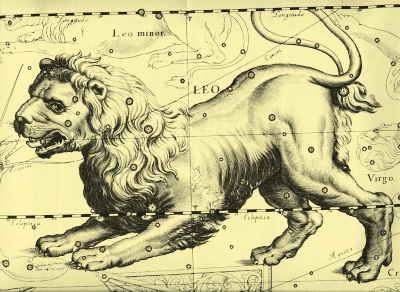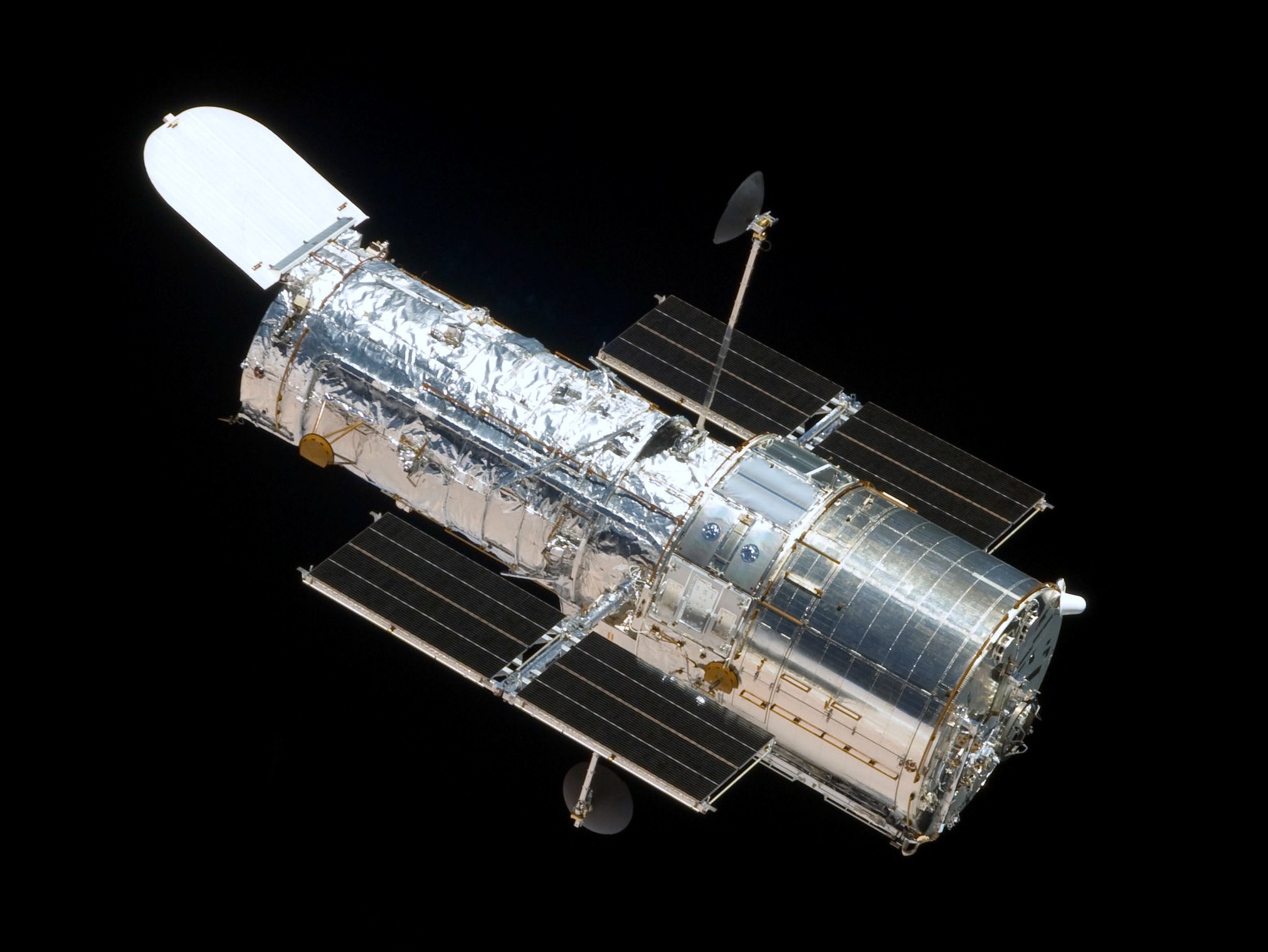|
Observatory
An observatory is a location used for observing terrestrial, marine, or celestial events. Astronomy, climatology/meteorology, geophysical, oceanography and volcanology are examples of disciplines for which observatories have been constructed. Historically, observatories were as simple as containing an astronomical sextant (for measuring the distance between stars) or Stonehenge (which has some alignments on astronomical phenomena). Astronomical observatories Astronomical observatories are mainly divided into four categories: space-based, airborne, ground-based, and underground-based. Ground-based observatories Ground-based observatories, located on the surface of Earth, are used to make observations in the radio and visible light portions of the electromagnetic spectrum. Most optical telescopes are housed within a dome or similar structure, to protect the delicate instruments from the elements. Telescope domes have a slit or other opening in the roof that can be opened during ... [...More Info...] [...Related Items...] OR: [Wikipedia] [Google] [Baidu] |
Paranal Observatory
Paranal Observatory is an astronomical observatory operated by the European Southern Observatory (ESO). It is located in the Atacama Desert of northern Chile on Cerro Paranal at altitude, south of Antofagasta. By total light-collecting area, it is the largest optical-infrared observatory in the Southern Hemisphere; worldwide, it is second to the Mauna Kea Observatory on Hawaii. The Very Large Telescope (VLT), the largest telescope on Paranal, is composed of four separate telescopes. In addition, the four main telescopes can be used simultaneously for extra light gathering capacity, and for interferometry. Four auxiliary telescopes of each are also part of the VLTI to make it available when the main telescopes are being used for other projects. The site also houses two survey telescopes with wide fields of view, the VISTA and the VLT Survey Telescope for surveying large areas of the sky; and two arrays of small telescopes called NGTS and SPECULOOS which are dedicated to searc ... [...More Info...] [...Related Items...] OR: [Wikipedia] [Google] [Baidu] |
Mauna Kea Observatories
The Mauna Kea Observatories (MKO) are a group of independent astronomical research facilities and large telescope observatories that are located at the summit of Mauna Kea on the Big Island of Hawaiʻi, United States. The facilities are located in a 525-acre (212 ha) special land use zone known as the "Astronomy Precinct", which is located within the 11,228-acre (4,544 ha) Mauna Kea Science Reserve. The Astronomy Precinct was established in 1967 and is located on land protected by the Historical Preservation Act for its significance to Hawaiian culture. The presence and continued construction of telescopes is highly controversial due to Mauna Kea's centrality in native Hawaiian religion and culture, as well as for a variety of environmental reasons. The location is near ideal because of its dark skies from lack of light pollution, good astronomical seeing, low humidity, high elevation of , position above most of the water vapor in the atmosphere, clean air, good weath ... [...More Info...] [...Related Items...] OR: [Wikipedia] [Google] [Baidu] |
Atacama Large Millimeter Array
The Atacama Large Millimeter/submillimeter Array (ALMA) is an astronomical interferometer of 66 radio telescopes in the Atacama Desert of northern Chile, which observe electromagnetic radiation at millimeter and submillimeter wavelengths. The array has been constructed on the elevation Chajnantor plateau - near the Llano de Chajnantor Observatory and the Atacama Pathfinder Experiment. This location was chosen for its high elevation and low humidity, factors which are crucial to reduce noise and decrease signal attenuation due to Earth's atmosphere. ALMA provides insight on star birth during the early Stelliferous era and detailed imaging of local star and planet formation. ALMA is an international partnership amongst Europe, the United States, Canada, Japan, South Korea, Taiwan, and Chile. Costing about US$1.4 billion, it is the most expensive ground-based telescope in operation. ALMA began scientific observations in the second half of 2011 and the first images were relea ... [...More Info...] [...Related Items...] OR: [Wikipedia] [Google] [Baidu] |
Astronomy
Astronomy () is a natural science that studies astronomical object, celestial objects and phenomena. It uses mathematics, physics, and chemistry in order to explain their origin and chronology of the Universe, evolution. Objects of interest include planets, natural satellite, moons, stars, nebulae, galaxy, galaxies, and comets. Relevant phenomena include supernova explosions, gamma ray bursts, quasars, blazars, pulsars, and cosmic microwave background radiation. More generally, astronomy studies everything that originates beyond atmosphere of Earth, Earth's atmosphere. Cosmology is a branch of astronomy that studies the universe as a whole. Astronomy is one of the oldest natural sciences. The early civilizations in recorded history made methodical observations of the night sky. These include the Babylonian astronomy, Babylonians, Greek astronomy, Greeks, Indian astronomy, Indians, Egyptian astronomy, Egyptians, Chinese astronomy, Chinese, Maya civilization, Maya, and many anc ... [...More Info...] [...Related Items...] OR: [Wikipedia] [Google] [Baidu] |
Very Large Telescope
The Very Large Telescope (VLT) is a telescope facility operated by the European Southern Observatory on Cerro Paranal in the Atacama Desert of northern Chile. It consists of four individual telescopes, each with a primary mirror 8.2 m across, which are generally used separately but can be used together to achieve very high angular resolution. The four separate optical telescopes are known as ''Antu'', ''Kueyen'', ''Melipal'', and ''Yepun'', which are all words for astronomical objects in the Mapuche language. The telescopes form an array complemented by four movable Auxiliary Telescopes (ATs) of 1.8 m aperture. The VLT operates at visible light, visible and infrared wavelengths. Each individual telescope can detect objects roughly four billion times fainter than can be detected with the naked eye, and when all the telescopes are combined, the facility can achieve an angular resolution of about 0.002 arcsecond. In single telescope mode of operation angular resolution is ab ... [...More Info...] [...Related Items...] OR: [Wikipedia] [Google] [Baidu] |
Star
A star is an astronomical object comprising a luminous spheroid of plasma (physics), plasma held together by its gravity. The List of nearest stars and brown dwarfs, nearest star to Earth is the Sun. Many other stars are visible to the naked eye at night sky, night, but their immense distances from Earth make them appear as fixed stars, fixed points of light. The most prominent stars have been categorised into constellations and asterism (astronomy), asterisms, and many of the brightest stars have proper names. Astronomers have assembled star catalogues that identify the known stars and provide standardized stellar designations. The observable universe contains an estimated to stars. Only about 4,000 of these stars are visible to the naked eye, all within the Milky Way galaxy. A star's life star formation, begins with the gravitational collapse of a gaseous nebula of material composed primarily of hydrogen, along with helium and trace amounts of heavier elements. Its stellar ... [...More Info...] [...Related Items...] OR: [Wikipedia] [Google] [Baidu] |
Optical Telescope
An optical telescope is a telescope that gathers and focuses light mainly from the visible part of the electromagnetic spectrum, to create a magnified image for direct visual inspection, to make a photograph, or to collect data through electronic image sensors. There are three primary types of optical telescope: * Refracting telescopes, which use lenses and less commonly also prisms (dioptrics) * Reflecting telescopes, which use mirrors (catoptrics) * Catadioptric telescopes, which combine lenses and mirrors An optical telescope's ability to resolve small details is directly related to the diameter (or aperture) of its objective (the primary lens or mirror that collects and focuses the light), and its light-gathering power is related to the area of the objective. The larger the objective, the more light the telescope collects and the finer detail it resolves. People use optical telescopes (including monoculars and binoculars) for outdoor activities such as observational as ... [...More Info...] [...Related Items...] OR: [Wikipedia] [Google] [Baidu] |
Airborne Observatory
An airborne observatory is an airplane, airship, or balloon with an astronomical telescope. By carrying the telescope to a sufficiently high altitude, the telescope can avoid cloud cover, pollution, and carry out observations in the infrared spectrum, above water vapor in the atmosphere which absorbs infrared radiation. Some drawbacks to this approach are the instability of the lifting platform, the weight restrictions on the instrument, the need to safely recover the gear afterward, and the cost compared to a comparable ground-based observatory. History Balloon-borne telescopes have been used for observation from the stratosphere since the Stratoscope I was launched in 1957. A number of different instruments have since been carried aloft by balloons for observation in the infrared, microwave, X-ray and gamma ray bands. The BOOMERanG experiment, flown between 1997–2003, and the MAXIMA, which made flights in 1998 and 1999, were used to map the Cosmic Microwave Background Radi ... [...More Info...] [...Related Items...] OR: [Wikipedia] [Google] [Baidu] |
Space Observatory
A space telescope or space observatory is a telescope in outer space used to observe astronomical objects. Suggested by Lyman Spitzer in 1946, the first operational telescopes were the American Orbiting Astronomical Observatory, OAO-2 launched in 1968, and the Soviet Orion 1 ultraviolet telescope aboard space station Salyut 1 in 1971. Space telescopes avoid the filtering and distortion ( scintillation) of electromagnetic radiation which they observe, and avoid light pollution which ground-based observatories encounter. They are divided into two types: Satellites which map the entire sky (astronomical survey), and satellites which focus on selected astronomical objects or parts of the sky and beyond. Space telescopes are distinct from Earth imaging satellites, which point toward Earth for satellite imaging, applied for weather analysis, espionage, and other types of information gathering. History Wilhelm Beer and Johann Heinrich Mädler in 1837 discussed the advantages of ... [...More Info...] [...Related Items...] OR: [Wikipedia] [Google] [Baidu] |
Canary Islands
The Canary Islands (; es, Canarias, ), also known informally as the Canaries, are a Spanish autonomous community and archipelago in the Atlantic Ocean, in Macaronesia. At their closest point to the African mainland, they are west of Morocco. They are the southernmost of the autonomous communities of Spain. The islands have a population of 2.2 million people and they are the most populous special territory of the European Union. The seven main islands are (from largest to smallest in area) Tenerife, Fuerteventura, Gran Canaria, Lanzarote, La Palma, La Gomera, and El Hierro. The archipelago includes many smaller islands and islets, including La Graciosa, Alegranza, Isla de Lobos, Montaña Clara, Roque del Oeste, and Roque del Este. It also includes a number of rocks, including those of Salmor, Fasnia, Bonanza, Garachico, and Anaga. In ancient times, the island chain was often referred to as "the Fortunate Isles". The Canary Islands are the southernmost region of Spain, and ... [...More Info...] [...Related Items...] OR: [Wikipedia] [Google] [Baidu] |
Light Pollution
Light pollution is the presence of unwanted, inappropriate, or excessive use of artificial Visible spectrum, lighting. In a descriptive sense, the term ''light pollution'' refers to the effects of any poorly implemented lighting, during the day or night. Light pollution can be understood not only as a phenomenon resulting from a specific source or kind of pollution, but also as a contributor to the wider, collective impact of various sources of pollution. Although this type of pollution can exist throughout the day, its effects are magnified during the night with the contrast of darkness. It has been estimated that 83 percent of the world's people live under light-polluted skies and that 23 percent of the world's land area is affected by skyglow. The area affected by artificial illumination continues to increase. A major side-effect of urbanization, light pollution is blamed for compromising health, disrupting ecosystems, and spoiling aesthetic environments. Globally, it has incr ... [...More Info...] [...Related Items...] OR: [Wikipedia] [Google] [Baidu] |
Sphinx Observatory
The Sphinx Observatory is an astronomical observatory located above the Jungfraujoch in Switzerland. It is named after the ''Sphinx'', a rocky summit on which it is located. At above mean sea level, it is one of the highest observatories in the world. Accessible to the public, it is also the second highest observation deck in Switzerland. The mountain top has been tunneled to fit an elevator which ascends to the observatory from the Jungfraujoch railway station, the highest such train station in Europe. The building is located on the Valais side of the border, only a few metres from the canton of Bern, although it is accessed via the Jungfrau Railway from the Bernese Oberland. The open viewing deck accessible to the public is adjacent to the observatory. It offers views of the Jungfrau, Mönch, and Eiger peaks, all within a few kilometers. Science The scientific part of the Sphinx observatory includes two large laboratories, a weather observation station, a workshop, two ... [...More Info...] [...Related Items...] OR: [Wikipedia] [Google] [Baidu] |


.jpg)

.jpg)




